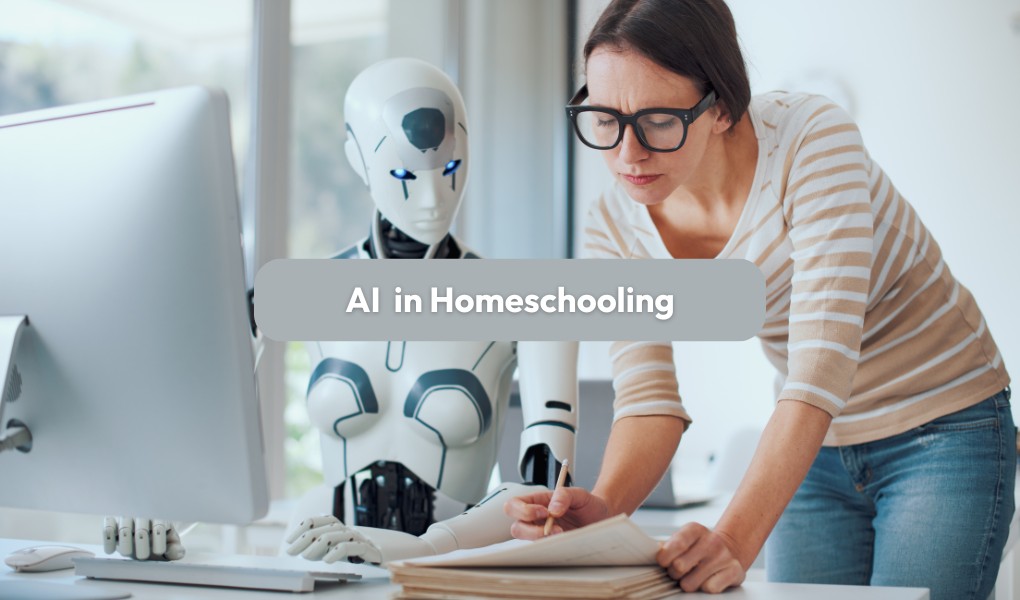Whilst spontaneous learning might sound self-explanatory, it’s so much more than what its name simply implies.


Contents
What is Spontaneous Learning?
Whilst spontaneous learning might sound self-explanatory, it’s so much more than what its name simply implies. Unlike the structured traditional methods of learning that we see in schools, spontaneous learning happens naturally and is driven by a child’s innate curiosity.
It’s the learning that we see happen in those moments at home or outside where our child is completely fixated on a task or engaged in a particular activity, all by their own choosing. There’s usually nothing prepared or structured because children discover these interests by themselves as they engage with different environments.
For homeschooling families, embracing spontaneous learning can be both liberating and empowering. It enables you to nurture your child’s individual interests, creativity, and critical thinking in an informal yet effective way. But how exactly does this method work, and how can you make it a part of your homeschool experience?
Why Should You Encourage Spontaneous Learning?
The core value of spontaneous learning is letting curiosity guide the learning process. The key characteristics of spontaneous learning are:
- Child-led exploration: Learning stems from your child’s interests, allowing them to explore topics at their own pace and level.
- Flexibility and fluidity: There’s no need to adhere to a strict schedule. Learning can occur at any moment, whether during a planned activity or an unexpected event.
- Contextual and relevant: Learning happens in real-world situations, making it immediately meaningful and easy to relate to.
- Engagement-driven: Because your child is following their natural curiosity, they are more engaged and motivated to explore and learn more.
These characteristics are also some of the reasons why it’s good to encourage spontaneous learning, but the reasons don’t end there. Home educators favour spontaneous learning because it’s organic and can happen at any time— during play, while reading, or even in casual conversation.
Spontaneous learning isn’t confined to textbooks and strict curriculums, and parents need only act as facilitators rather than instructors. Learning happens in real time, often without your child even realising they are being educated. You’ll find that a spontaneous learner is often a happy learner because they aren’t being influenced or told to do something. The beauty of spontaneous learning lies in its flexibility and relevance to your child’s immediate world.
How to Encourage Spontaneous Learning in Your Homeschooling
Spontaneous learning thrives in an environment that promotes freedom, curiosity, and flexibility. With the right mindset, you can definitely incorporate it into your homeschooling routine, and soon it will just happen naturally.
Here are some tips to help encourage spontaneous learning both at home and when you’re out and about.
1. Create a rich learning environment
A spontaneous learner thrives in an environment full of opportunities to explore. At home you can make sure there are various resources, tools, or materials that may spark interest. Use your child’s own interests to inspire creative activities or give them resources that they’ve never used before.
Here are some ideas:
- Stock your home with books covering a broad spectrum of subjects—science, art, history, nature, and even graphic novels or DIY guides. You never know what might capture your child’s attention!
- Puzzles, building blocks, LEGO, craft supplies, and science kits are excellent tools that encourage children to experiment and learn through trial and error.
- If possible, set up a small garden or an outdoor space where your child can observe nature, grow plants, or conduct experiments like studying insects or weather patterns.
A well-prepared environment invites exploration. You’ll find that simply leaving out materials often leads to children naturally gravitating towards self-directed learning.
2. Be flexible
Spontaneous learning can happen at any time, anywhere, so it’s best to be flexible when the time arises. This might mean deviating from your original plans or schedule. If you’re used to structure, this may take some time getting used to, but allowing your child the freedom to follow their interests leads to deeper understanding and more meaningful engagement. For instance, if they suddenly want to learn more about dinosaurs after watching a documentary, you can put aside your usual curriculum and dive into the world of palaeontology.
3. Foster curiosity with questions and encourage critical thinking
As mentioned, spontaneous learning is driven by curiosity. You can help foster your child’s own curiosity by encouraging them to ask questions and answer them with questions of your own. If they ask, “Why do chameleons change colour?” you can ask, “What might be a reason to change colour?”
With other questions such as, “Why does this happen?” or “How does this work?” resist the urge to immediately provide the answer. Instead, guide your child to discover the answer themselves through books, experiments, or discussions. The more this happens, the more your child will think, research, and work things out for themselves.
4. Take note of your child’s interests
A great way to encourage spontaneous learning is by taking note of your child’s interests and facilitating the homeschooling day with relatable activities and experiences. By acknowledging their interests, even if they vary from day to day, you are encouraging your child to learn. You’ll see that your child will make their own discoveries, find their own books to read, and create their own activities.
5. Encourage independence
When children have more independence, their confidence grows, as does their ability to make their own decisions. And when children get to make their own decisions, spontaneous learning occurs.
You can give your child more independence by letting them create the routine and set the pace for the day. Allow them to make important learning choices and try not to interfere too much.
6. Use real-life learning opportunities
Life itself provides countless opportunities for spontaneous learning. Every day, there are moments where education can happen naturally, such as going shopping, cooking, or gardening.
When shopping, you can ask your child to help calculate the total cost of items or convert weighed items to different units of measurements.
When cooking, you can get your child to follow a recipe, measure ingredients, or create their own dishes.
When gardening, you can get your child to plant their own seeds and watch them grow over time. This introduces biology, ecology, and learning about the weather.
By seeing that learning is not restricted to books or worksheets, your child will begin to understand the joy of education and seek more learning opportunities.
7. Document your journey
Though spontaneous learning is less formal than traditional methods, it’s still important to track your child’s progress. Not only does this help you stay aligned with educational goals, but it also gives you and your child something to reflect on. Consider:
- Journaling: Keep a learning journal to document your child’s questions, discoveries, and projects. You can also encourage your child to maintain their own journal.
- Portfolios: Take pictures of projects, artwork, and experiments to create a visual record of what your child has explored.
- Scrapbooks: For younger children, creating scrapbooks of their learning adventures (such as nature walks or science experiments) can be a fun and interactive way to document their progress.
Check out our favourite scrapbook!
These methods ensure that even though learning is unstructured, it’s still meaningful and aligns with broader educational goals.
Examples of Spontaneous Learning in Action
1. Nature Walks and Science Exploration
Imagine going for a simple nature walk, only for your child to become fascinated with different types of trees. This could spark interesting questions about how trees grow, photosynthesis, or even the role of trees in ecosystems. Afterwards, you could collect leaves, bring them home, and start researching the various species, perhaps leading into various other projects on climate and the environment.
2. Cooking and Maths Skills
Baking and cooking provides a perfect yet fun learning opportunity. Your child can practise maths by measuring ingredients, understand chemistry by seeing how baking soda helps dough rise, and even learn about time management as they set timers for baking. You also have the choice to discuss nutritional value or how to create and manage a budget for groceries.
3. Art and History Combined
Suppose your child loves drawing. One day, they decide to draw pyramids. This could be because of a natural interest in ancient Egypt or lead to one, opening the door to a broader exploration of history, culture, and geography. You could explore ancient civilisations, build models, or visit a museum exhibit together. The spontaneous interest in art has now blossomed into an in-depth learning experience.
4. Building and Engineering Concepts
Your child might start building a fort out of blankets and pillows, but through this process, they’re unknowingly learning about engineering, balance, and spatial awareness. You could take this further by introducing basic engineering principles—like how bridges or buildings are constructed—or even by providing materials for building a more complex structure like a treehouse or model bridge.
The Benefits of Spontaneous Learning
Spontaneous learning brings with it a wealth of benefits for homeschoolers. It’s no wonder why so many home educators favour this method of learning with these ten great benefits!
1. Creates a lifelong love of learning
One of the greatest benefits of spontaneous learning is the genuine love of learning that it inspires. When children are free to explore topics that interest them, education becomes enjoyable rather than a chore. This will motivate them to seek knowledge throughout their lives. With spontaneous learning, it’s always a personal choice.
2. Encourages critical thinking and problem-solving skills
Spontaneous learning promotes critical thinking and problem-solving in ways that structured education often can’t. Since learners actively seek answers to questions they’re curious about, they naturally develop the ability to analyse information, consider different perspectives, and come up with creative solutions.
Rather than passively absorbing information, spontaneous learners ask “why” and “how” questions, encouraging them to dig deeper and understand the subject at a more profound level.
3. Supports self-directed learning and independence
Encouraging spontaneous learning teaches children—and adults—how to become self-directed learners. This means they take ownership of their education, becoming more responsible and independent in their pursuit of knowledge. Self-directed learners are empowered to seek out information, explore new ideas, and problem-solve without needing constant guidance.
For homeschoolers, self-directed learning fuels autonomy, allowing children to take control of their educational journey, which can lead to greater confidence and self-esteem. These skills are invaluable later in life, as they help individuals navigate complex situations and thrive in both personal and professional environments.
4. Promotes creativity and innovation
Spontaneous learning often involves thinking outside the box. Since it encourages learners to follow their interests and explore topics in often unconventional ways, it naturally promotes creativity. Whether it’s through building, art, writing, or problem-solving, spontaneous learners constantly engage in creative thinking.
Encouraging children and adults to think creatively can lead to breakthroughs in problem-solving and inspire new ways of looking at the world.
5. Tailored to individual learning styles and interests
Every individual learns differently, and spontaneous learning allows people to tailor their educational experiences to their unique learning styles and preferences. For example, a child who enjoys hands-on activities can learn through experiments and projects, while a child who loves reading can dive into books on their favourite subjects.
This personalisation is always more effective as it engages learners in ways that align with their natural inclinations. Traditional education methods often follow a one-size-fits-all approach, which can leave some students disengaged or struggling. Spontaneous learning, however, meets learners where they are and adapts to their needs.
6. Enhances engagement
Spontaneous learning boosts engagement because it revolves around topics that learners are naturally curious about. When people are genuinely interested in what they’re learning, they are more likely to focus, dig deeper, and remember the information.
Traditional, rigid learning structures can lead to disengagement, especially when the material feels irrelevant or disconnected from real life. With spontaneous learning, the relevance is immediate because it aligns with the learner’s curiosity. As a result, retention of information tends to be higher, and learners are more likely to apply their knowledge to new situations.
7. Adaptable to real-world experiences
Life is full of learning opportunities, and spontaneous learning encourages individuals to take advantage of them. From cooking in the kitchen to exploring nature, every experience becomes an opportunity to learn. This real-world learning makes education more practical and relevant, helping learners see the connection between their studies and everyday life.
8. Reduces burnout and stress
For both homeschoolers and traditional students, rigid, structured learning can lead to burnout and stress. The pressure to stick to a schedule, meet deadlines, and achieve specific outcomes can be overwhelming, particularly for children who feel less connected to the material. Spontaneous learning, on the other hand, is more relaxed and low-pressure because learners engage with topics on their own terms.
This approach makes learning more enjoyable and less stressful, which can lead to better mental health and a more positive attitude toward education. It allows children to learn at their own pace, without the anxiety that often comes with the expectations of a traditional school.
9. Aligns with natural curiosity
Humans are naturally curious beings, and spontaneous learning taps into this curiosity. Individuals are able to explore their interests in a way that feels natural and enjoyable. From a young age, children are full of “why” and “how” questions, and spontaneous learning encourages them to pursue their curiosity without feeling restricted by formal lessons.
10. Flexible and accessible for all ages
Spontaneous learning isn’t just for young children—it can benefit learners of all ages. Whether you’re a homeschooler, an adult learner, or someone pursuing personal growth, spontaneous learning is adaptable to any stage of life.
Spontaneous learning might involve pursuing a new hobby, researching a topic of interest, or, often for adults, developing skills for personal or professional development. Since learning can happen anywhere and at any time, it’s accessible to anyone with a curious mind.
Remember, the goal of homeschooling isn’t just to teach facts, but to foster a love of learning that will last a lifetime. Spontaneous learning does just that—it transforms curiosity into wisdom, and everyday moments into lasting lessons.

m@liberated
Want more from Liberated to Learn?
Subscribe to stay updated about new posts, resources and giveaways!












